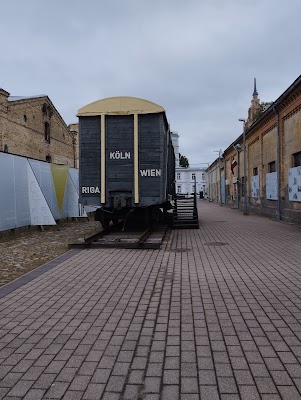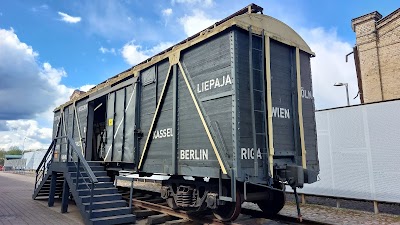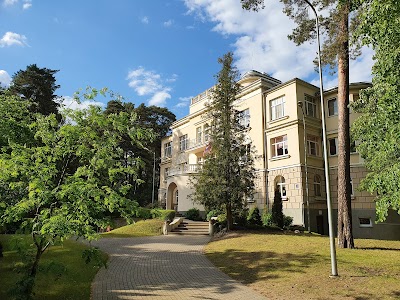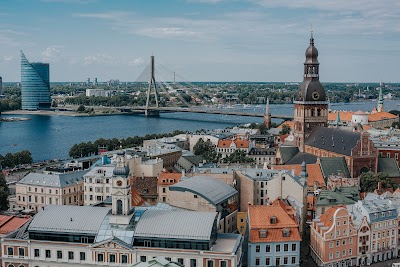Riga Ghetto and Latvian Holocaust Museum (Rīgas Geto un Latvijas Holokausta muzejs)
Overview
The Riga Ghetto and Latvian Holocaust Museum, located in Sala Municipality, Latvia, is a profoundly moving site dedicated to preserving the memory of the tragic events of the Holocaust in Latvia. This museum serves as an essential destination for tourists wishing to understand the impact of World War II on Latvia's Jewish community and to honor the victims who perished during this dark chapter of history.
The Riga Ghetto was established by Nazi Germany in October 1941, shortly after their invasion of Latvia. This confined area became a place where the Jewish population was forcibly relocated, subjected to inhumane living conditions and brutal treatment. Over time, tens of thousands of Jews from Latvia and other countries were gathered here before being sent to concentration camps and execution sites. The Riga Ghetto stands as a powerful symbol of the systematic persecution and genocide that European Jews faced during the Holocaust.
Today, the Riga Ghetto and Latvian Holocaust Museum serves as a solemn reminder of these atrocities. The museum aims to educate visitors about the Holocaust's impact on Latvia, the history of the Jewish community in the region, and the stories of those who suffered and perished. Through its exhibitions, the museum provides a comprehensive narrative of the tragic events that unfolded during this period.
One of the museum’s most compelling features is its extensive collection of personal testimonies, photographs, and artifacts. These items offer a deeply personal glimpse into the lives of the ghetto's inhabitants. The personal stories shared through diaries, letters, and recorded interviews give voice to individuals and families who endured unimaginable hardships. This human element is crucial in fostering empathy and understanding among visitors.
The outdoor exhibits also enhance the museum experience significantly. A notable feature is the symbolic reconstruction of the ghetto's living conditions, including replicas of the wooden barracks where many Jews were forced to live. This reconstruction helps visitors visualize and grasp the harsh realities faced by those confined within the ghetto walls.
Additionally, the museum grounds include several memorials and sculptures that pay tribute to the victims of the Holocaust. The Wall of Names is particularly striking; it is adorned with the names of Latvian Jews who perished during this period, serving as a powerful reminder of the human cost of hatred and discrimination. These memorials provide a contemplative space for reflection and remembrance, allowing visitors to honor the memory of those who were lost.
Another fascinating aspect of the museum is its focus on the pre-war Jewish community in Latvia. Exhibits detailing the vibrant cultural, economic, and social contributions of Jews in Latvia before the Holocaust reveal a rich heritage that was nearly eradicated. This context helps visitors appreciate the profound loss suffered by the Jewish community and the broader societal impact of the genocide.
Education is at the forefront of the museum's mission, and it frequently hosts educational programs, guided tours, and workshops. These initiatives engage a wide audience—from school groups to international tourists—in meaningful dialogue about history, tolerance, and human rights. The museum's educational efforts underscore the importance of remembering the past to prevent future atrocities.
In addition to its permanent exhibits, the Riga Ghetto and Latvian Holocaust Museum also hosts temporary exhibits and special events. These may include art exhibitions, film screenings, and lectures that explore various facets of Holocaust history and its contemporary relevance. Such events provide fresh perspectives and keep the dialogue around these critical issues ongoing.
For those planning a visit, the museum is easily accessible via public transport and is situated in an area that can be comfortably explored on foot. Visitors are encouraged to set aside several hours to fully engage with the exhibits and participate in any available guided tours for a more enriched experience.
In conclusion, the Riga Ghetto and Latvian Holocaust Museum is a must-visit for anyone seeking to deeply understand the Holocaust as it unfolded in Latvia. Its heartfelt exhibitions and memorials ensure that the stories of those who suffered are not forgotten, while its educational programs inspire a commitment to combating intolerance and preserving human dignity. By visiting this museum, tourists can gain valuable insights into history and reflect on the enduring importance of memory and justice.







